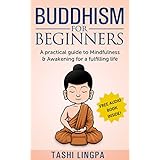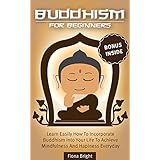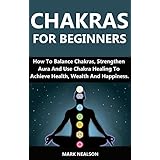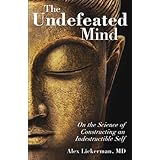THE RISE AND SPREAD OF BUDDHISM
|
A. The followers of the Buddha Dharma outnumber those of every other religion.
280. Q. What is the estimated number?
A. About five hundred millions (5,000 lakhs or 500 crores): this is five-thirteenths, or not quite half, of the estimated population of the globe.
281. Q. Have many great battles been fought and many countries conquered; has much human blood been spilt to spread the Buddha Dharma?
A. History does not record one of those cruelties and crimes as having been committed to propagate our religion. So far as we know, it has not caused the spilling of a drop of blood. (See footnote ante—Professor Kolb's testimony.)
282. Q. What, then, is the secret of its wonderful spread?
A. It can be nothing else than its intrinsic excellence: its self-evident basis of truth, its sublime moral teaching, and its sufficiency for all human needs.
283. Q. How has it been propagated?
A. The Buddha, during the forty-five years of his life as a Teacher, travelled widely in India and preached the Dharma. He sent his wisest and best disciples to do the same throughout India.
284. Q. When did He send for his pioneer missionaries?
A. On the full-moon day of the month Wap (October).
285. Q. What did he tell them?
A. He called them together and said: "Go forth, Bhikkhus, go and preach the law to the world. Work for the good of others as well as for your own.... Bear ye the glad tidings to every man. Let no two of you take the same way."
286. Q. How long before the Christian era did this happen?
A. About six centuries.
287. Q. What help did Kings give?
A. Besides the lower classes, great Kings, Rājās and Mahārājās were converted and gave their influence to spread the religion.
288. Q. What about pilgrims?
A. Learned pilgrims came in different centuries to India and carried back with them books and teachings to their native lands. So, gradually, whole nations forsook their own faiths and became Buddhists.
289. Q. To whom, more than to any other person, is the world indebted for the permanent establishment of Buddha's religion?
A. To the Emperor Ashoka, surnamed the Great, sometimes Piyadāsi, sometimes Dharmāshoka. He was the son of Bindusāra, King of Magadha, arid grandson of Chandragupta, who drove the Greeks out of India.
290. Q. When did he reign?
A. In the third century B.C., about two centuries after the Buddha's time. Historians disagree as to his exact date, but not very greatly.
291. Q. What made him great?
A. He was the most powerful monarch in Indian history, as warrior and as statesman; but his noblest characteristics were his love of truth and justice, tolerance of religious differences, equity of government, kindness to the sick, to the poor, and to animals. His name is revered from Siberia to Ceylon.
292. Q. Was he born a Buddhist?
A. No, he was converted in the tenth year after his anointment as King, by Nigrodha Samanera, an Arhat.
293. Q. What did he do for Buddhism?
A. He drove out bad Bhikkhus, encouraged good ones, built monasteries and dāgobas everywhere, established gardens, opened hospitals for men and animals, convened a council at Patna to revise and re-establish the Dharma, promoted female religious education, and sent embassies to five Greek kings, his allies, and to all the sovereigns of India, to preach the doctrines of the Buddha. It was he who built the monuments at Kapilavastu, Buddha Gāya, Isipatana and Kusinārā, our four chief places of pilgrimage, besides thousands more.
294. Q. What absolute proofs exist as to his noble character?
A. Within recent years there have been discovered, in all parts of India, fourteen Edicts of his, inscribed on living rocks, and eight on pillars erected by his orders. They fully prove him to have been one of the wisest and most high-minded sovereigns who ever lived.
29.5. Q. What character do these inscriptions give to Buddhism?
A. They show it to be a religion of noble tolerance, of universal brotherhood, of righteousness and justice. It has no taint of selfishness, sectarianism or intolerance. They have done more than anything else to win for it the respect in which it is now held by the great pandits of western countries.
296. Q. What most precious gift did Dharmāshoka make to Buddhism?
A. He gave his beloved son, Mahinda, and daughter, Sanghamitta, to the Order, and sent them to Ceylon to introduce the religion.
297. Q. Is this fact recorded in the history of Ceylon?
A. Yes, it is all recorded in the Mahāvansa, by the keepers of the royal records, who were then living and saw the missionaries.
298. Q. Is there some proof of Sanghamitta's mission still visible?
A. Yes; she brought with her to Ceylon a branch of the very Bodhi tree under which the Buddha sat when he became Enlightened, and it is still growing.
299. Q. Where?
A. At Annrādhapura. The history of it has been officially preserved to the present time. Planted in 306 B.C., it is the oldest historical tree in the world.
300. Q. Who was the reigning sovereign at that time?
A. Dēvanampiyatissa. His consort, Queen Anula, had invited Sanghamitta to come and establish the Bhikkhuni branch of the Order.
301. Q. Who came with Sanghamitta?
A. Many other Bhikkhunis. She, in due time, admitted the Queen and many of her ladies, together with five hundred virgins, into the Order.
302. Q. Can we trace the effects of the foreign work of the Emperor Ashoka's missionaries?
A. His son and daughter introduced Buddhism into Ceylon: his monks gave it to the whole of Northern India, to fourteen Indian nations outside its boundaries, and to five Greek kings, his allies, with whom he made treaties to admit his religious preachers.
303. Q. Can you name them?
A. ANTIOCHUS of Syria, PTOLEMY of Egypt, ANTIGONUS of Macedon, MARGAS of Cyrene, and ALEXANDER of Epiros.
04. Q. Where do we learn this?
A. From the Edicts themselves of Ashoka the Great, inscribed by him on rocks and stone pillars, which are still standing and can be seen by everybody who chooses to visit the places.
305. Q. Through what western religious brotherhoods did the Buddha Dharma mingle itself with western thought?
A. Through the sects of the Therapeuts of Egypt and the Essenes of Palestine.
306. Q. When were Buddhist books first introduced into China?
A. As early as the second or third century B.C. Five of Dharmāshoka's monks are said—in the Samanta Pasādika and the Sārattha Dīpanī—two Pālī books—to have been sent to the five divisions of China.
307. Q. Whence and when did it reach Korea?
A. From China, in the year A. D. 372.
308. Q. Whence and when did it reach Japan?
A. From Korea, in A. D. 552.
309. Q. Whence and when did it reach Cochin China, Formosa, Java, Mongolia, Yorkand, Balk, Bokhara, Afghanistan and other Central Asian countries?
A. Apparently in the fourth and fifth centuries A.D.
310. Q. From Ceylon, whither and when did it spread?
A. To Burma, in A.D. 450, and thence gradually into Arakan, Kamboya and Pegu. In the seventh century (A.D. 638) it spread to Siam, where it is now, as it has been always since then, the State religion.
311. Q. From Kashmir, where else did it spread besides to China?
A. To Nepāl and Tibet.
312. Q. Why is it that Buddhism, which was once the prevailing religion throughout India, is now almost extinct there?
A. Buddhism was at first pure and noble, the very teaching of the Tathagata; its Sangha were virtuous and observed the Precepts; it won all hearts and spread joy through many nations, as the morning light sends life through the flowers. But after some centuries, bad Bhikkhus got ordination (Upasampada) the Sangha became rich, lazy, and sensual, the Dharma was corrupted, and the Indian nation abandoned it.
313. Q. Did anything happen about the ninth or tenth century A.D. to hasten its downfall?
A. Yes.
314. Q. Anything besides the decay of spirituality, the corruption of the Sangha, and the reaction of the populace from a higher ideal of man to unintelligent idolatry?
A. Yes. It is said that the Mussalmāns invaded, overran and conquered large areas of India; everywhere doing their utmost to stamp out our religion.
315. Q. What cruel acts are they charged with doing?
A. They burnt, pulled down or otherwise destroyed our vihāras, slaughtered our Bhikkhus, and consumed with fire our religious books.
316. Q. Was our literature completely destroyed in India?
A. No. Many Bhikkhus fled across the borders into Tibet and other safe places of refuge, carrying their books with them.
317. Q. Have any traces of these books been recently discovered?
A. Yes. Rai Bhādur Sarat Chandra Dās, C.I.E., a noted Bengali pandit, saw hundreds of them in the vihāra libraries of Tibet, brought copies of some of the most important back with him, and is now employed by the Government of India in editing and publishing them.
318. Q. In which country have we reason to believe the sacred books of primitive Buddhism have been best preserved and least corrupted?
A. Ceylon. The Encyclopaedia Britannica says that in this island Buddhism has, for specified reasons, "retained almost its pristine purity to modern times".
319. Q. Has any revision of the text of the Pitakas been made in modern times?
A. Yes. A careful revision of the Vināya Pitaka was made in Ceylon in the year A.D. 1875, by a convention of the most learned Bhikkhus, under the presidency of H. Sumangala, Pradhāna Sthavīra.
320. Q. Has there been any friendly intercourse in the interest of Buddhism between the peoples of the Southern and those of the Northern Buddhist countries?
A. In the year A.D. 1891, a successful attempt was made to get the Pradhāna Nayakas of the two great divisions to agree to accept fourteen propositions as embodying fundamental Buddhistic beliefs recognised and taught by both divisions. These propositions, drafted by Colonel Olcott, were carefully translated into Burmese, Sinhalese and Japanese, discussed one by one, unanimously adopted and signed by the chief monks, and published in January 1892.
321. Q. With what good result?
A. As the result of the good understanding now existing, a number of Japanese bhikkhus and samaneras have been sent to Ceylon and India to study Pālī and Samskrt.
322. Q. Are there signs that the Buddha Dharma is growing in favour in non-Buddhistic countries?[1]
A. There are. Translations of our more valuable books are appearing, many articles in reviews, magazines and newspapers are being published, and excellent original treatises by distinguished writers are coming from the press. Moreover, Buddhist and non-Buddhist lecturers are publicly discoursing on Buddhism to large audiences in western countries. The Shin Shu sect of Japanese Buddhists have actually opened missions at Honolulu, San Francisco, Sacramento and other American places.
323. Q. What two leading ideas of ours are chiefly taking hold upon the western mind?
A. Those of Karma and Reincarnation. The rapidity of their acceptance is very surprising.
324. Q. What is believed to be the explanation of this?
A. Their appeals to the natural instinct of justice, and their evident reasonableness.
[1] See Appendix.
|








No comments:
Post a Comment